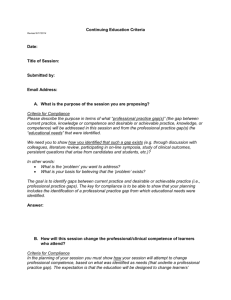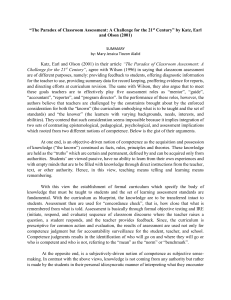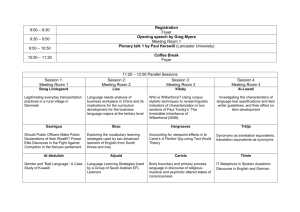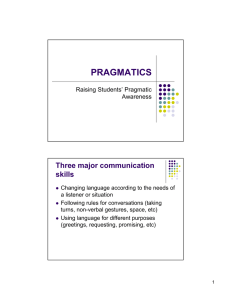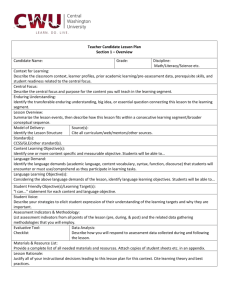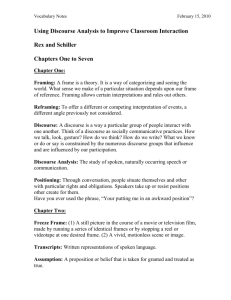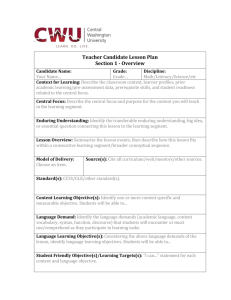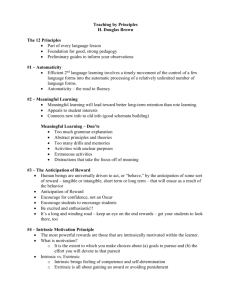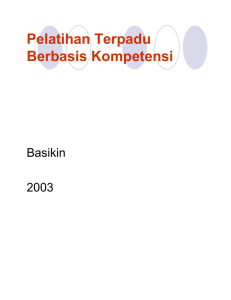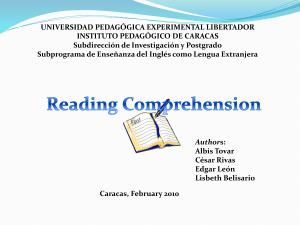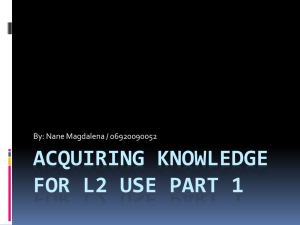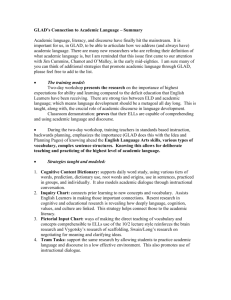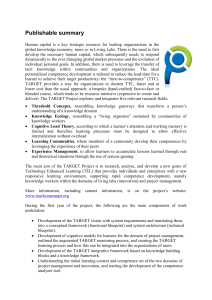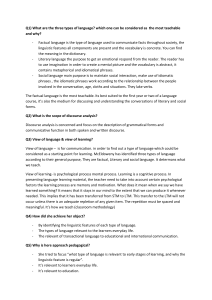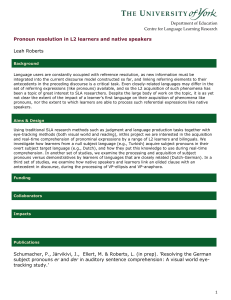LING417ch6productive activities
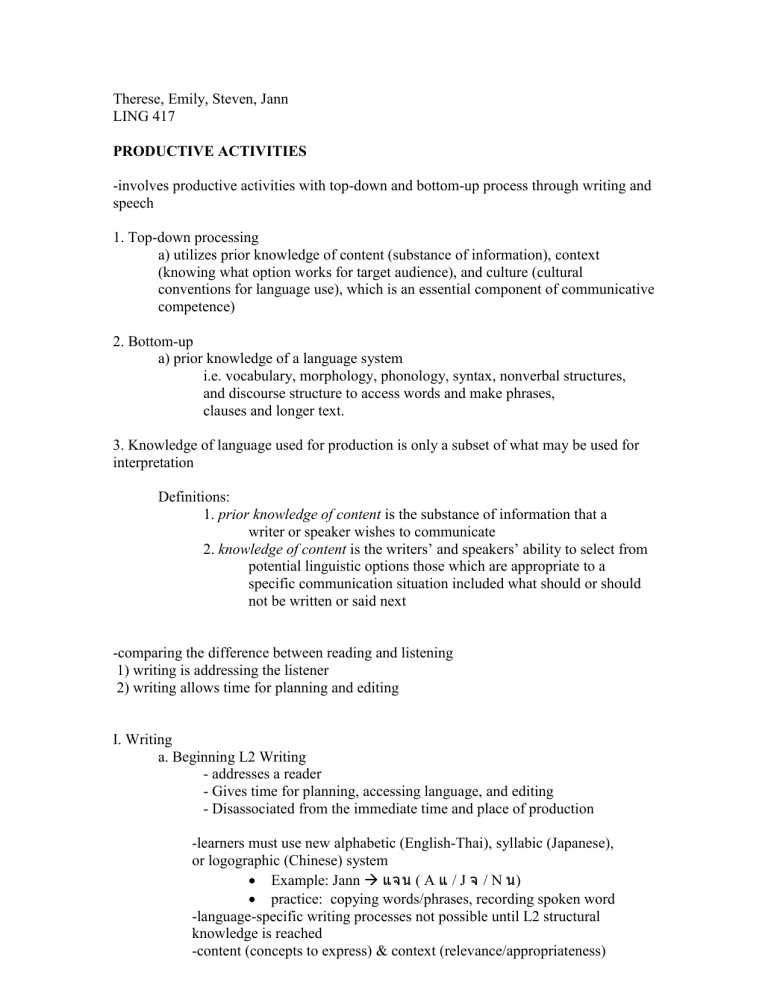
Therese, Emily, Steven, Jann
LING 417
PRODUCTIVE ACTIVITIES
-involves productive activities with top-down and bottom-up process through writing and speech
1. Top-down processing a) utilizes prior knowledge of content (substance of information), context
(knowing what option works for target audience), and culture (cultural conventions for language use), which is an essential component of communicative competence)
2. Bottom-up a) prior knowledge of a language system i.e. vocabulary, morphology, phonology, syntax, nonverbal structures, and discourse structure to access words and make phrases, clauses and longer text.
3. Knowledge of language used for production is only a subset of what may be used for interpretation
Definitions:
1. prior knowledge of content is the substance of information that a writer or speaker wishes to communicate
2. knowledge of content is the writers’ and speakers’ ability to select from potential linguistic options those which are appropriate to a specific communication situation included what should or should not be written or said next
-comparing the difference between reading and listening
1) writing is addressing the listener
2) writing allows time for planning and editing
I. Writing a. Beginning L2 Writing
- addresses a reader
- Gives time for planning, accessing language, and editing
- Disassociated from the immediate time and place of production
-learners must use new alphabetic (English-Thai), syllabic (Japanese), or logographic (Chinese) system
Example: Jann แจน ( A แ / J จ / N น )
practice: copying words/phrases, recording spoken word
-language-specific writing processes not possible until L2 structural knowledge is reached
-content (concepts to express) & context (relevance/appropriateness)
knowledge are NOT language-specific
these domain can be associated w/ L1 structure, then encoded into L2
-models & controlled writing exercises ("change time frame from past to present”) for writing help early L2 learners
help learners memorize mechanical elements
prevent learners from being creative & expressive; causes overreliance on models b. Academic Writing
-Requires considerable knowledge of linguistic elements i.e. vocabulary, morphology, syntax, mechanics of orthographic
-representation and punctuation, conventions related to style, appropriate organization, formal register, and accuracy in production.
~Standardized Testing a) TOEFL test of written English b) Teacher training programs c) Graduate Record Examination (GRE) d) British council's IELTS written sub-test
II. Speaking
-Addresses a listener
-unplanned and requires “real time” processing
-allows for immediate clarification and interactional support
- speech acts is most of what is said by people in the course of interpersonal communication pragmatic competence: central to language learning and knowing when to deploy them is basic to what we have
-Speech acts:
Capital ‘D’ Discourse
Lower ‘D’ discourse
Other aspects of speaking competence
Contextualization Cue are elements of communication that allow people to express and interpret meaning beyond referential meaning that the surface structure of messages provides.

